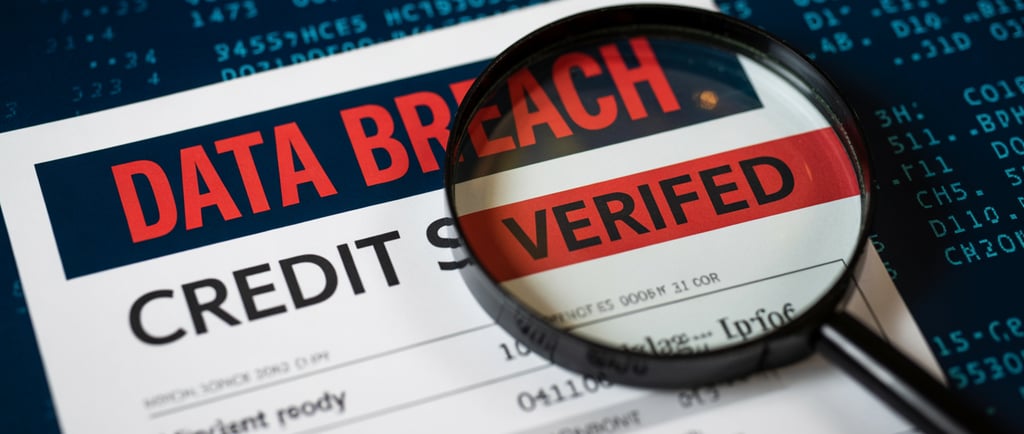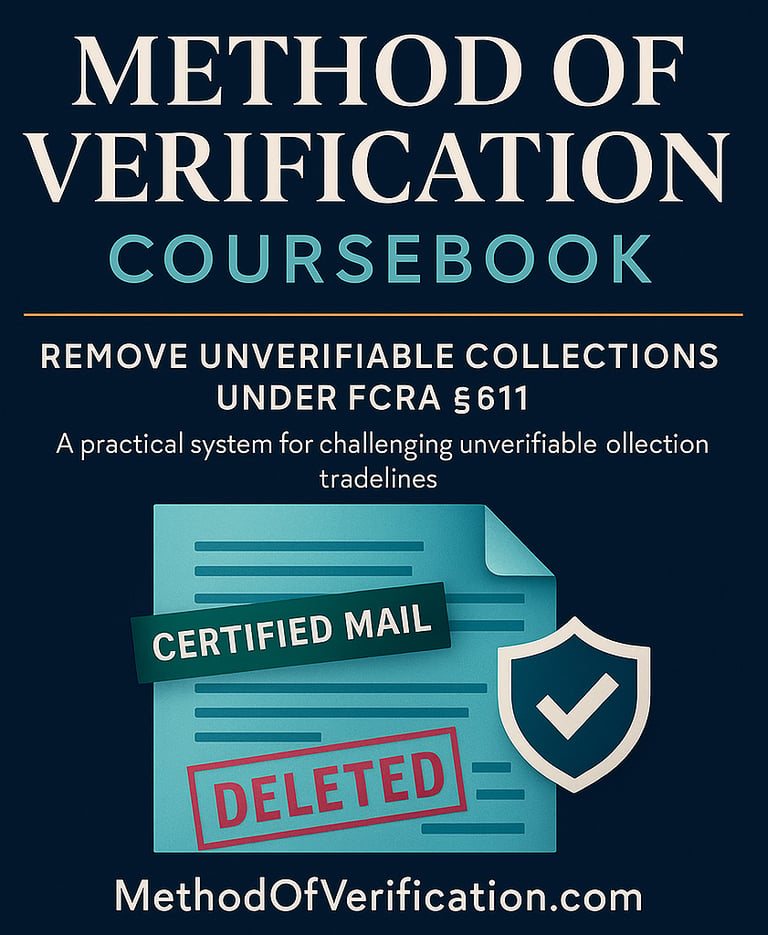After a Data Breach: How the Method of Verification Demands Proof When Information Integrity Is Uncertain
Data breaches compromise the accuracy of millions of consumer credit files. If your report has errors after a breach, don’t accept a simple “verified” response. This post explains how the Method of Verification dispute letter works under the Fair Credit Reporting Act to force credit bureaus to prove what they report or delete unverifiable data.
CREDIT DESPUTE LETTERS
The Credit Repait Man
9/29/20253 min read


After a Data Breach: How the Method of Verification Demands Proof When Information Integrity Is Uncertain
When a credit bureau suffers a data breach, consumers panic — and for good reason. A breach means millions of records are suddenly at risk of being stolen, manipulated, or exposed. If your personal information is compromised, how can you trust that the accounts sitting on your credit report are even accurate?
This is exactly where the Method of Verification dispute letter becomes more powerful than ever.
Why Data Breaches Matter for Your Credit
In recent years, breaches at major credit bureaus have exposed sensitive data such as names, Social Security numbers, addresses, and account details. Once this information is loose, identity thieves can use it to open accounts in your name or create fraudulent debts.
The problem is that credit bureaus often continue reporting the same questionable information even after a breach. They may treat it as “verified” without really investigating whether the data still holds up. That leaves you carrying the burden for information that could be corrupted, incomplete, or flat-out wrong.
The Fair Credit Reporting Act and Your Rights
The Fair Credit Reporting Act, Section 611 gives you the right to demand that only accurate and verifiable information remain on your credit report. If something cannot be verified, it must be deleted. That rule doesn’t go away when a breach happens — in fact, it becomes even more critical.
Under Section 611(a)(7), when a bureau says an account is “verified,” you have the right to send a Method of Verification letter and demand details about how they verified it. That means you can press them for answers like:
Who did you contact?
What records were reviewed?
How do you know this account actually belongs to me?
Why the Method of Verification Is Powerful After a Breach
After a data breach, the integrity of bureau records is in question. If they claim an account is accurate, they need to back it up with real documentation. If they can’t, the law says the item should be removed.
Think of it this way: if a warehouse had its inventory system hacked, you wouldn’t trust a one-word answer like “verified.” You’d want proof — receipts, invoices, and real records. The Method of Verification dispute letter forces credit bureaus to provide the same kind of paper trail.
A Real-World Example
Imagine John discovers his credit score has dropped because of a credit card account he never opened. Shortly after, news breaks that the bureau holding his data experienced a massive breach. John disputes the account, but the bureau responds: “Verified.”
Instead of stopping there, John sends a Method of Verification letter. With the bureau’s systems compromised, they cannot produce proper documentation showing how the account was verified. Result: the fraudulent account is deleted.
Takeaway for Consumers
Data breaches make it harder than ever to trust what appears on your credit report. The good news is, you don’t have to accept “verified” at face value. The law empowers you to demand more — and the Method of Verification dispute letter is the tool that makes it possible.
The Next Step: Protect Yourself With the Right System
Knowing your rights is one thing. Using them effectively is another. That’s why I created the Method of Verification Masterclass and Letters Pack.
Inside, you’ll find:
A step-by-step explanation of how the Method of Verification works.
Professional letters designed to hold bureaus accountable.
Training to help you push back when a “verified” response doesn’t hold water.
If you’ve been impacted by a data breach — or just don’t trust a vague “verified” result — this system is for you.

